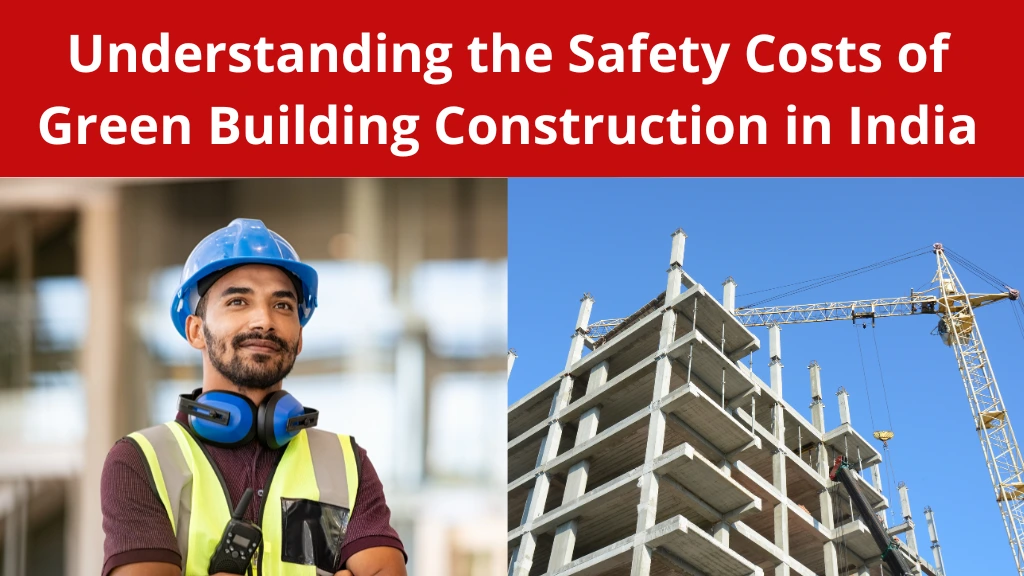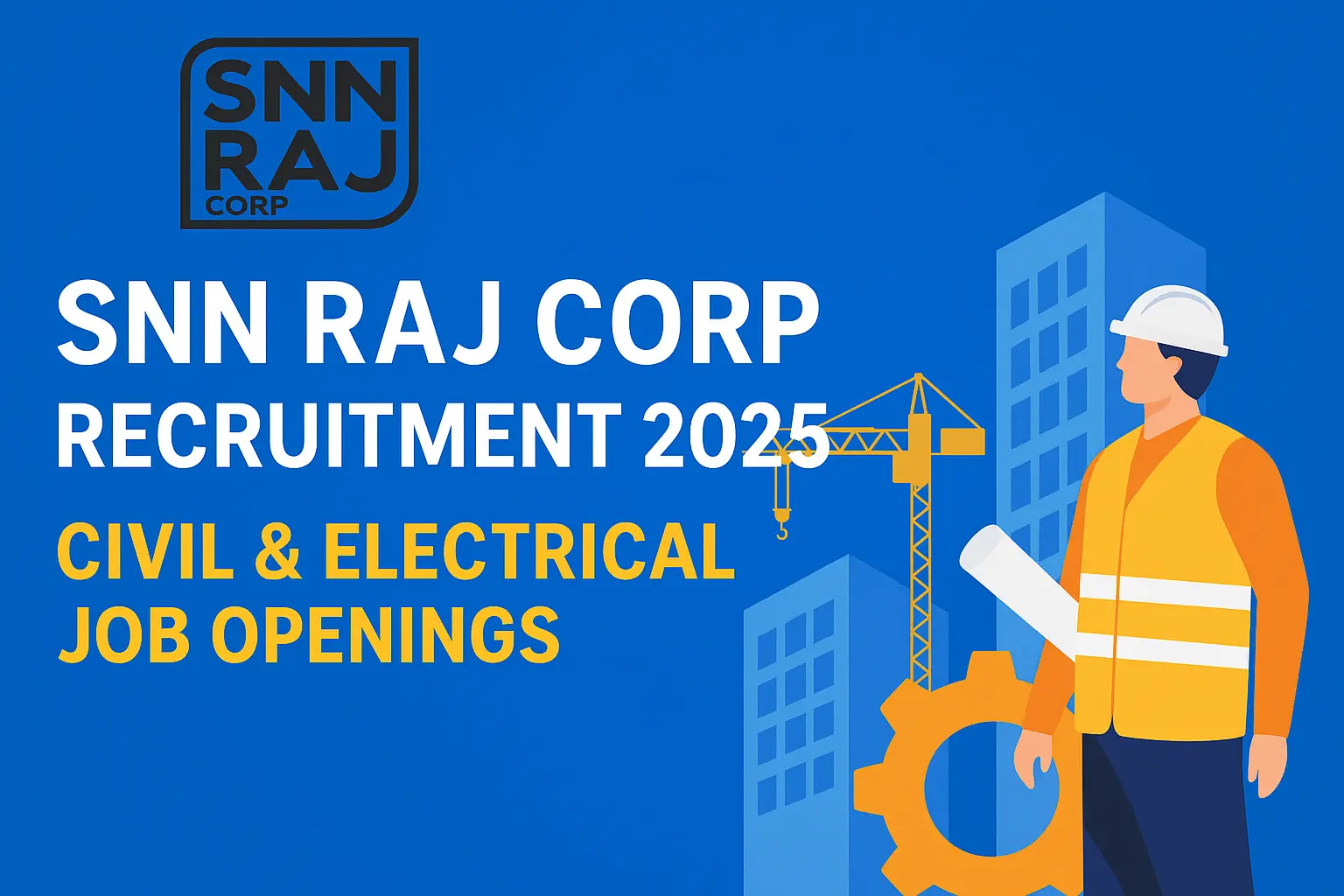Today with the construction of green buildings we are taking steps forward towards a sustainable future in combating climate change as well as resource depletion. However, green building practices bring with them a wide range of environmental benefits, and although many of those carry no specific safety implications that could impact project cost, certain green building practices can increase the chances of injury to project team members and result in additional costs to the project. This article explores the depth of the safety costs of green building construction in India what makes all of these costs so high and the ways to take care of them.
What Are Green Buildings?
Green buildings are designed to use energy and resources, such as water and energy but also sustainable materials and innovative waste practices. These structures in India follow different certification programs which include India Green Building Council (IGBC), GRIHA (Green Rating for Integrated Habitat Assessment), and LEED (Leadership in Energy and Environmental Design). To get these certifications, sustainability criteria are followed rigorously, and it isn’t just about material efficiency, it also goes about worker safety during construction.
The Importance of Safety in Green Construction
Because of the new materials and technologies used in green construction, it is extremely important to ensure safety. Frequently, workers must work with unfamiliar substances, for example, recycled materials or more sophisticated insulation systems that present their own health and safety issues. However, because solar panels and wind turbines are renewable energy sources, there is a need to know about them and take reasonable precautions.
Key Factors Influencing Safety Costs
1. Project Size and Complexity
The magnitude of a green building project has a large effect on cost. The amount of safety measures required increases with the size of the building or the complexity of the building’s architecture. There are additional expenses with more personnel better equipment and the establishment of detailed safety plans. For example, tougher safety budgets may be necessary for high-rise green buildings that require more fall protection and crane operations.
2. Location and Geographical Consideration
The cost goes a long way in being directly related to a construction site’s geographical context. Certain areas, where there are heavy rains or high winds, will need more rugged safety measures for the services of the workers and the structure. Further, material and skilled worker transportation costs may be added by remote locations, affecting overall safety expenditures.
3. Material Selection
Special handling processes are often needed for green building materials such as bamboo, recycled metal, or low-VOC ( volatile organic compound) paints. Toxic materials require protective gear and training specific to them resulting in a safety cost that can rise. For example, if the reclaimed wood has safety requirements altogether different from normal timber.
4. Certification Requirements
The papers we quoted earlier confirm how green building certifications bring additional costs and require rigorous safety audits and inspections. They can expect such as adherence to defined safety regulations, and this leads to the overall safety budget. This process can include the hiring of third-party auditors and invigilators which will inflate project costs.
5. Technological Integration
Modern technologies, for example, energy-efficient HVAC systems, smart building technologies, or rainwater harvesting systems, bring novel safety considerations to the incorporation. Incidentally, training employees on safe handling and installation of these systems is also a cost factor. Installing a solar power system may call for electricians and laborers to get specialized training.
Breakdown of Safety Costs in Green Construction
1. Training and Awareness Programs
One of the biggest investments in green construction was training. Training not only in ‘general’ construction safety but specifically in the dangers inherent in green building materials and technologies is also required by workers. Most training programs will reduce accidents in the workplace and help an organization comply with safety regulations.
- Estimated Cost: This can mean that training costs can run as high as 2-5% of the total project budget.
2. The Personal Protective Equipment (PPE)
Worker safety depends on having the right PPE. Items include helmets, gloves, eye protection, and offensive task-specific gear such as how to work at heights or handling hazardous materials. For the reason that some of the green materials are unique, PPE for them may need to be better than normal construction.
- Estimated Cost: Some PPE can cost 1-3 percent of the total budget.
3. Safety Audits and Compliance Checks
Regular safety audits and inspections can be necessary when complying with the safety regulations as well as to obtain the necessary certifications. Hiring third-party professionals to meet standards and hence raising costs are part of these processes. Checkpoints may be inspected by certification bodies during construction.
- Estimated Cost: Safety audits could make up 1-5 percent of total expenses, depending on which certification.
4. Insurance and Liability Costs
Because of the new materials and technologies used in green construction, green construction projects may need particular insurance. As a rule of thumb, the specific risks associated with green projects are mostly considered by insurers, which means higher premiums. Beyond the safety bills themselves, comprehensive insurance coverage mitigates risk and is one more way to keep the risk balance sheet in check.
- Estimated Cost: Insurance costs for green projects are likely to be between 2 and 4 percent higher than for traditional buildings.
5. Environmental and Waste Management Protocols
Green construction emphasizes the management of environmental impact to maintain effective waste disposal and pollution control means. If you’re implementing strict waste management practices, this may mean more staff, and therefore safety related costs.
- Estimated Cost: On the order of 1-2 percent of total project costs, waste management costs typically fall.
Average Total Safety Cost Proportion for Green Buildings in India
Safety costs in traditional construction represent normally about 2-5% of the total project budget. But in green construction, this percentage rises to 3 to 7 percent or even more because of particular considerations discussed above. The overall safety cost for a green building can vary from some lacking to several lakhs of rupees and even crores of rupees varying for the project scale.
- Example: The expected safety cost for a green building project with a budget of ₹10 crores (100 million) can vary between ₹30 lakhs (3 million) to ₹70 lakhs (7 million) or higher based on many factors.
Government Incentives and Their Role
The Indian government, in a bid to encourage sustainable building practices, has taken steps to provide incentives for developers and builders in the green construction landscape. They are trying to offset part of the cost of safety in green construction.
1. Renewable Energy Integration Subsidies
A safe company like coal that’s losing money also receives subsidies for its integration of renewable energy, which indirectly reduces safety-related costs as solar power is all integrated. By subsidising installation costs these amounts can assist in curbing some of the financial pressures incurred when installation of safety provisions is necessary when getting set up.
2. Green Buildings and their Tax Benefits
Green buildings become financially viable, in part, because of tax reductions. Thus, the incentives can furnish great relief to developers in the face of increased safety costs.
3. State-Specific Initiatives
India also gives incentives to promote green building practices for several states. Such measures as lower property taxes or grants for adoptive construction practices are directed towards sustainability with the main accent on safety.
Challenges in Managing Safety Costs
Despite the benefits of green construction, several challenges can elevate safety costs:
1. Lack of Skilled Labor
The lack of workers trained to manage safety in green building venues complicates safety management. It can lead to increased training expenses because skilled labor is required in that niche area.
2. Quality Control of New Materials
However, to ensure the safety and reliability of new green materials, rigorous quality control measures can be a time and budget-killing exercise.
3. High Initial Costs of Sustainable Materials.
Sustainable materials are well suited to a long life but typically have higher initial costs than traditional materials. That can skew the budget toward higher safety costs.
Conclusion
The safety costs of green building construction in India are made up of several factors that deal with both the safety of the workers as well as environmental sustainability. Although these costs may be costlier than those in traditional construction, nevertheless the realignment in time and money toward safety on major green building projects is necessary to guarantee its long-term success and reliability.
This knowledge about the components of safety cost helps project stakeholders to make avoidive decisions which means that sustainability goals are aligned with safety and regulatory compliance. We identify means through which strategic planning, investment in training, and utilization of government incentives can help navigate, mitigate these costs, and further contribute to a greener, safer future for the construction industry in India.
Read More: What is the Difference Between Civil Engineering and Construction?
FAQs
1. Are the safety costs of building green higher than conventional methods?
While they are traditionally more expensive in terms of safety costs, green construction is commonly 3-7% more than the total project budget, compared to 2-5% in standard construction.
2. How do certifications affect the effectiveness of safety costs?
Specific safety standards are mentioned for the certification such as IGBC, GRIHA, and LEED. To comply with these standards, audits, and inspections generally have to be carried out more than once, which results in additional costs.
3. What are ways to manage the safety costs of my green building project?
Managing safety costs effectively can utilize effective planning, complete training programs, and work with experienced contractors as well as government incentives.
4. What safety measures are required for green construction?
Trained in material handling, on PPE appropriate to the use of sustainable materials, risk assessments, and excessive emphasis on waste management procedures, safety measures are of course afforded.
5. What about government building safety incentives for green building?
There are, however, numerous government subsidies, tax benefits, and state-specific programs that encourage green building solutions that can offset safety costs.










